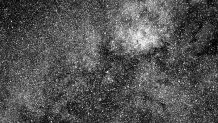SAC helps NASA set the clock on recently launched TESS telescope
Researchers from the Stellar Astrophysics Center (SAC) at Aarhus University will be helping NASA set the clock on the space telescope TESS, which was launched in April. In the wake of the launch, the international space conference TASC4/KASCII will be held at Aarhus University this week.

A research group at the DNRF’s Stellar Astrophysics Center (SAC) at Aarhus University is currently busy setting the clock with high precision on NASA’s most recent space telescope, TESS, which will search for exoplanets in the light of distant stars. The planet hunter was launched from Cape Canaveral Air Force Station in Florida, in the US, on April 18 of this year and has recently snapped the first test shots that show hundreds of thousands of stars in the constellation Southern Cross.
Carolina Von Essen from SAC, together with a small group of other researchers, is leading the work on setting the clock on TESS. In order for researchers to compare observations from TESS with observations made with telescopes on Earth, it is extremely important that the clock will be correct and synchronized with the clocks on other telescopes. Therefore, Von Essen and the rest of the research group are now observing the same stars with TESS and with a series of Earth-based telescopes in Argentina, to determine the difference between the time that TESS “thinks” it is with the correct time on Earth. After the clocks are synchronized, the SAC researchers’ checkups of the clock will take place routinely as long as TESS is observing and the task is expected to last at least two years.
This week, experts from across the world will meet in Aarhus to discuss future work with data from the space telescope. The occasion is the international conference TASC4/KASCII at Aarhus University, which will focus on breakthrough science within the fields of stellar evolution, exoplanet research, and galactic archeology. Around 160 of the world’s astronomers will attend the conference, including a number of people from NASA’s various satellite projects who are closely collaborating with researchers from SAC on the TESS space mission.
The conference will be held from July 8 to July 13.
Read more about the conference here.
Further information about the TESS telescope can be found here.
